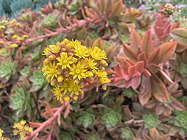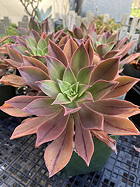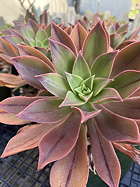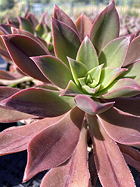The publication of this distinctive species has been a long time coming. In the interim it has become established in cultivation and can be found on the internet erroneously identified as A. leucoblepharum. It differs from most other aeoniums in its leaves having a persistent red midstripe and the tendency of the rest of the leaf to blush an attractive pinkish or orangish color. While ciliate, like A. leucoblepharum, the so-called eyelash aeonium, the cilia, rather than being hairlike, are curved, glassy, inflated, translucent, hook-like structures, reminiscent under magnification of the early stages of the sporulating slime mold, Pilobolus. Its distribution is restricted to northern Yemen while A. leucoblepharum is found in E. Africa including Djibouti, Eritrea, Ethiopia, Kenya, Somalia, Uganda, and probably South Sudan as well, according to Aeonium authority Marco Cristini. On October 1, 1976, noted botanists and succulent explorers John Lavranos and Len Newton found this plant (L&N 13084) at the top of Sumara Pass on the road from Sana’a to Hodeida, Yemen. A year later, Lavranos returned with Gerald Barad and collected the species in another nearby gorge below the Himyarartic Fort above Sumara Pass (L&B 15996). This is HBG 39507, distributed as ISI 1730 (as A. leucoblepharum var. leucoblepharum), listed as Barad & Lavranos 15996, collected September 27, 1977, according to Mellie Lewis in the description of A. lavranosii-newtonii, at 2500 m above Sumara Pass. Fast forward to October, 2007, when the Huntington hosted its annual Orchid Festival. Local florists, Bob and Stella Berry created a magnificent large-scale arrangement on the Huntington Gallery Loggia. Included were rosettes of this plant which I begged off of them after the show. I tentatively identified it as a form of Aeonium decorum which can also have leaves with a red midstripe but usually only on juvenile plants. In order to distinguish this form, I called it Aeonium decorum ‘Berry Nice’ in honor of our source and with a nod to its lovely, blushed color. This is the name under which it was marketed at our sales and by wholesale grower San Marcos Growers. Subsequently, I realized that we had long-standing mass plantings of the species in our Desert Garden. However, there was no accession record for Aeonium ‘Berry Nice’. After some sleuthing of our records, it became apparent that we had been growing two of the three Lavranos collections of this species: Lavranos & Newton 13082 (not an HBG accession), Lavranos & Barad 15996 (HBG 39507), and Lavranos 16227 (HBG 39962). Though labels rusted or were lost in the intervening years, the Huntington shared material with other growers and nurseries so that the species became established in southern California horticulture and made its way into the Berry’s floral arrangement. We are pleased to be able to offer rooted cuttings of this Yemeni species. Alas, we cannot be certain which Lavranos number applies. Nevertheless, we can be certain that this is A. lavranosii-newtonii from the Sumara Pass area, Yemen. The genetic diversity of plants in cultivation and the wild has yet to be studied but those grown in the U.S. and Europe seem to be quite uniform and may constitute one predominant clone. We offer it under a new accession number, HBG 145783, $10.
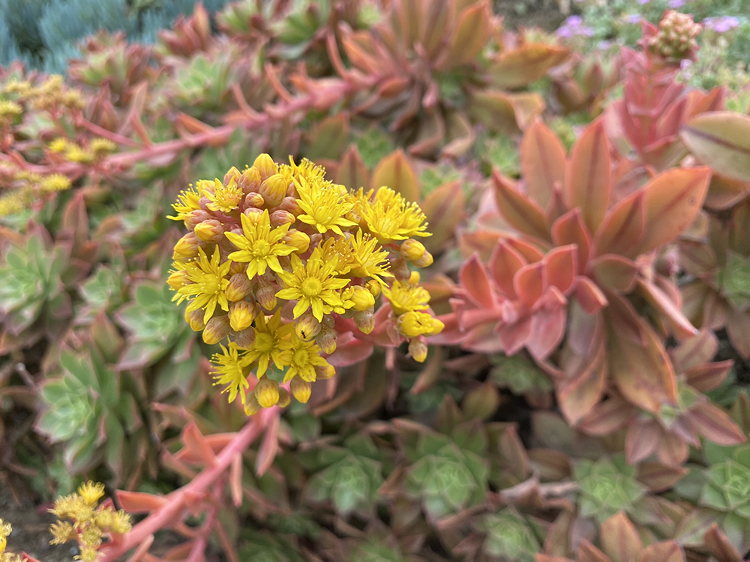
Published in the Cactus and Succulent Journal, Vol. 97 (2), Summer 2025
